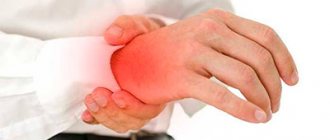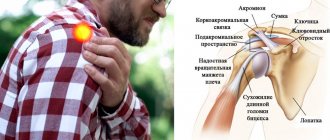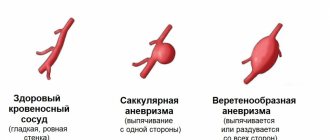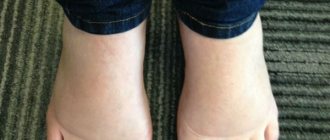Everything in the human body is interconnected. Life processes depend on one another, and any change in the functioning of internal organs will certainly make itself felt with new sensations. One of these manifestations is cold extremities. According to statistics, this signal about problems in the circulatory system is noticed by almost 30% of the working population of the Earth. Moreover, the vast majority of people who have similar problems are representatives of the fair half of humanity. What is the cause of icy hands? Should I start worrying when I notice such a symptom?
Heat regulation is an interesting ability of the body. Research in this area has shown that the body of home sapiens produces an amount of energy per day that would be enough to boil a liter of water. But at the same time, the temperature of a healthy person does not rise above 37°C. Maintaining comfortable living conditions is ensured by regulating heat transfer.
It is important to know that the skin reacts differently to changing weather conditions. In cold weather, the body loses little energy, saving it in order to warm up, and in hot weather, it gives it back to the maximum, providing cooling. This is why we often sweat in the summer, because the evaporation of liquid from the surface of the skin takes away excess heat.
In addition to the sweat glands, blood vessels play an important role in thermoregulation. They have the property of changing the lumen necessary for blood circulation. When expanding, the body is abundantly saturated with blood and warms up. Constriction of blood vessels leads to a feeling of chills. That is why during a fever the patient literally shakes from the cold at a body temperature above 38-39°C.
Kinds
Cold hands disease can be divided into two types: physiological and pathological.
Physiological can be caused by cooling, a sedentary lifestyle, a strict diet, disruption of the daily routine, taking certain medications, abuse of tobacco products, previous cooling of the extremities, and so on.
Pathological testifies to the presence of diseases of the thyroid gland, nerves and blood vessels. In this case, you need to immediately consult a doctor, since coldness of the extremities is a symptom.
Cold hands: what is the reason and what to do?
Cold hands are considered a woman's disease. Representatives of the fair sex from 15 to 45 years old especially often complain about low temperature of the extremities. This is due to the fact that women have weaker thermoregulation of the body than men. Perhaps you just dress lightly and it's all about hypothermia. Then it’s enough to reconsider your wardrobe. In addition, this is a common symptom in smokers, as well as with severe anxiety and fatigue. However, this phenomenon may also be based on illness.
Iron-deficiency anemia
Take the test
Weather sensitivity test
Goosebumps
Iron is the main component of hemoglobin in the blood, the main transport vehicle for oxygen. Lack of iron leads to disruption of metabolic processes in cells, including energy. This occurs due to poor nutrition, impaired absorption of iron in the gastrointestinal tract, increased blood loss (nasal, uterine, etc.), with a special need for it (pregnancy, lactation, rapid growth), etc. Additional signals - pallor skin and mucous membranes, dizziness, fatigue, tinnitus, rapid heartbeat.
What to do?
First of all, a clinical blood test is required. The normal hemoglobin level in children under 6 years of age is 110 g/l, in children over 6 years of age and adults – 120 g/l. A special diet is important - less milk, more meat, fruits and vegetables. Iron supplements are taken in combination with ascorbic acid.
Vegetovascular dystonia
In this case, hot and cold flashes, lack of air, dizziness are felt, and blood pressure rises and falls. Irritability increases and fatigue increases. From time to time I experience pain in the heart and tingling in various parts of the body. Moreover, the examination does not reveal signs of damage to organs and systems. The cause of the malaise is a disruption of the autonomic nervous system, which regulates the entire body.
What to do?
It often occurs against the background of many diseases, so it is important to undergo a full examination, especially by an endocrinologist and neurologist. Physiotherapy, exercise therapy, and psychotherapy help to cope with the disease.
Thyroid diseases
The thyroid gland is a key link in the hormonal regulation of the entire body. With hypothyroidism (lack of thyroid hormones), metabolic processes slow down. Lethargy and lethargy, drowsiness, and excess weight appear. The person feels depressed. The face, especially the eyelids, swells, and the pulse slows down. The skin becomes dry, often flakes, and thickens. The functioning of the mechanisms responsible for maintaining normal body temperature is disrupted. When thyroid hormone levels are low, a person often feels cold.
What to do?
It is important to undergo an examination by an endocrinologist, do an ultrasound of the thyroid gland, and take a general blood and urine test. If necessary, the doctor may prescribe additional X-ray and magnetic resonance imaging, computed tomography, etc.
Causes
Cold hands are just one symptom of various neurological diseases.
- Raynaud's disease with vascular neurosis provokes spasms of small arteries and cold intolerance.
- Vegetovascular dystonia.
- Lesions of peripheral nerves.
- Diabetes.
- Heart failure.
- Consequences of acute cerebral circulatory disorders, paresis or paralysis.
Treatment for cold hands
Treatment in this case is not symptomatic - it is important to establish the cause of cold hands and overcome the disease that causes them. If after diagnosis no serious abnormalities are identified, then you should follow some tips that will help you get rid of unpleasant sensations over time:
- Active lifestyle - start your morning with gymnastics, move more;
- Stimulation of blood circulation - palm massage, contrast shower, rub with essential oils (if there are no contraindications);
- Stop smoking - nicotine constricts blood vessels and negatively affects blood circulation;
- Include in your diet foods that have a warming effect, if there are no contraindications: cilantro, horseradish, mustard, ginger root, coriander;
- Avoid tight clothes and shoes - all narrow wardrobe items have a negative impact on the heat exchange process.
Which doctor treats you?
First of all, you need to contact a therapist to confirm or rule out physiological cold hands. Next, the therapist will refer the patient to a more specialized specialist.
In the case of neurological diseases, it is necessary to contact an experienced neurologist who will conduct a consultation and, with the help of additional examination, identify the cause and prescribe the correct treatment.
IMPORTANT! You should not self-medicate if you discover this symptom. Cold hands can be a manifestation of both the physiological norm of your body and a pathological process that develops in the body.
However, to find out, you need to contact a doctor at the Kuntsevo Medical and Rehabilitation Center, who will take an anamnesis, conduct a detailed examination and indicate what tests need to be taken to determine the causes of your condition. The doctor will also determine a list of necessary instrumental examinations. Come see our doctor and discuss all the issues that worry you to get rid of the problem once and for all!
Sign up
Diagnosis of cold hands
Considering the large number of reasons why hands are constantly cold, it is necessary to carefully diagnose. Doctors must first determine the cause of the symptom: identify problems with blood circulation, nervous or other diseases that lead to it.
If you experience cold hands, it is recommended to seek advice from the following specialists:
- Therapist;
- Neurologist;
- Dermatologist;
- Endocrinologist;
Most often, women's hands and feet get cold
This is due to the structural feature of their thermoregulatory system, which adapts depending on hormonal behavior.
Weak thermoregulation occurs in tall and thin people. Scientists have proven that cold extremities are most often present in people with thin bone structure.
Older people are also susceptible to poor thermoregulation. This is due to the accelerated aging process, where metabolism is slower than in younger people.
Scleroderma, Raynaud's syndrome
The fingers or toes become cold, numb, a tingling sensation appears in them, and they become white or even bluish in color. This occurs under the influence of stress or temperature exposure and can last from several minutes to several hours. At the end of the attack, the bluish skin turns red, fever and pain appear. This is Raynaud's syndrome - one of the manifestations of scleroderma. As a result of damage to the blood vessels, many organs and tissues of the body are affected, especially the skin. The face takes on a mask-like appearance, and it is difficult to open the mouth. It is believed that scleroderma is stimulated by viruses, poisoning, and congenital predisposition. This disease occurs 5 times more often in women than in men.
What to do?
At the first symptoms, you should urgently consult a dermatologist. They conduct laboratory tests of blood, urine, immunodiagnostics, X-ray examination of bones and joints, ultrasound of internal organs, and cardiac diagnostics.
Anemia
It is a disease in which the number of oxygen-carrying blood cells decreases. With a lack of O2 entering the human body, the cellular nutrition of tissues deteriorates, which is why the patient’s hands and feet are cold and there is a feeling of persistent weakness.
The disease can be either congenital or acquired. In the first case, red blood cells in the patient’s body are destroyed by the immune system, in the second, their production is disrupted due to various factors. Thus, an unbalanced diet, in which the food lacks essential vitamins and microelements, can lead to anemia.
Causes
Let's consider the main reasons why a person's hands still freeze. Firstly, this can happen due to the wrong choice of clothing. If, for example, you put on a demi-season jacket and go outside in frosty weather of -15 degrees Celsius, then, of course, the whole body will become hypothermic, and your hands will then remain cold for a long time. You should always dress appropriately for the weather.
Secondly, as already emphasized, cold hands can be a sign of the presence of certain pathologies, and here you cannot do without medical intervention.
Diagnostics
Patients with complaints of chilly hands should be examined by a neurologist to rule out the most common causes of discomfort. If necessary, the doctor gives a referral to an endocrinologist, vascular surgeon, or orthopedist-traumatologist. First, a standard neurological examination is performed to check the sensitivity and motor activity of the hands. For diagnostic purposes, the following instrumental and laboratory methods are used:
- X-ray diagnostics.
In photographs of the hands, attention is paid to the condition of the bones of the wrist, the presence of narrowing of the carpal tunnel or other deformities in this area. To confirm osteochondrosis as the cause of chilliness, radiography or computed tomography of the spine is prescribed. - Electroneuromyography.
An electrophysiological study allows you to detect the location of nerve damage, determine the extent of the pathological process and the degree of severity. ENMG is informative when it is necessary to differentiate vascular and neurological disorders and to identify vibration disease at an early stage. - Angiography.
X-ray examination with contrast is recommended to visualize the vascular bed and identify signs of Raynaud's syndrome. The doctor detects a lack of collateral circulation, depletion of the capillary network, tortuosity and periodic narrowing of small arteries. - Lab tests.
To assess thyroid function, blood is tested for T3, T4 and TSH. If necessary, a histological examination of organ biopsies is performed. To exclude autoimmune processes, a blood test is performed for antinuclear antibodies, rheumatoid factor and other specific markers.
Electromyography
Osteochondrosis
It is a disease in which thinning and deformation of the cartilage of the intervertebral discs occurs, which leads to poor circulation in the body. Most often, the spinal cord and surrounding nerves and vessels are affected. Osteochondrosis is characterized by a feeling of permanent cold in the extremities, pain throughout the body, weakness, and dizziness.
Disorders of the thyroid gland
The thyroid gland is involved in the production of hormones, the quality of its work directly affects the state of the entire body - it is responsible for the regulation of many systems. Thus, if thyroid function is reduced, hypothyroidism develops, which is characterized by insufficient release of hormones for the body to function properly.
Metabolic processes in the body slow down: the palms begin to constantly freeze, the person gains excess weight, swelling of the body appears, a feeling of permanent fatigue arises, and the heart rate decreases. Due to the fact that with hypothyroidism the process of thermoregulation worsens, people with this disease may constantly experience a feeling of cold, even in the summer at +30 C°.











